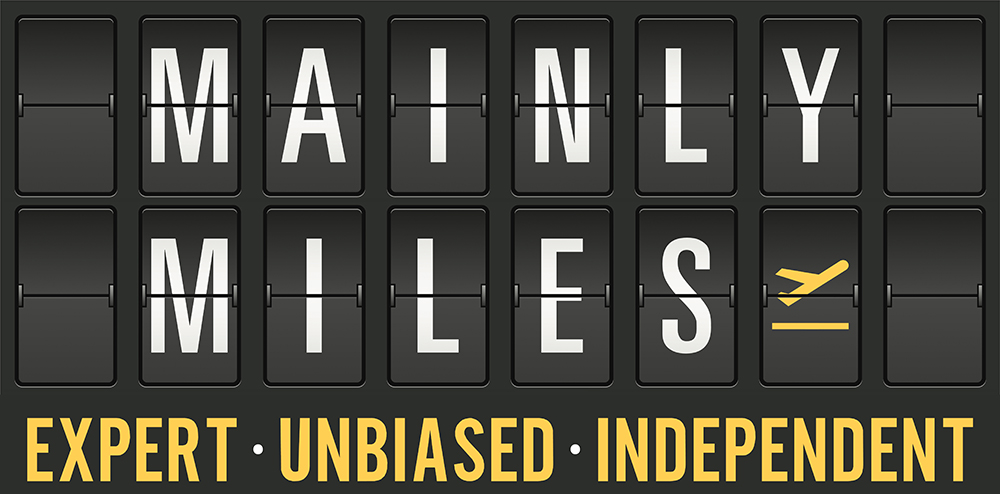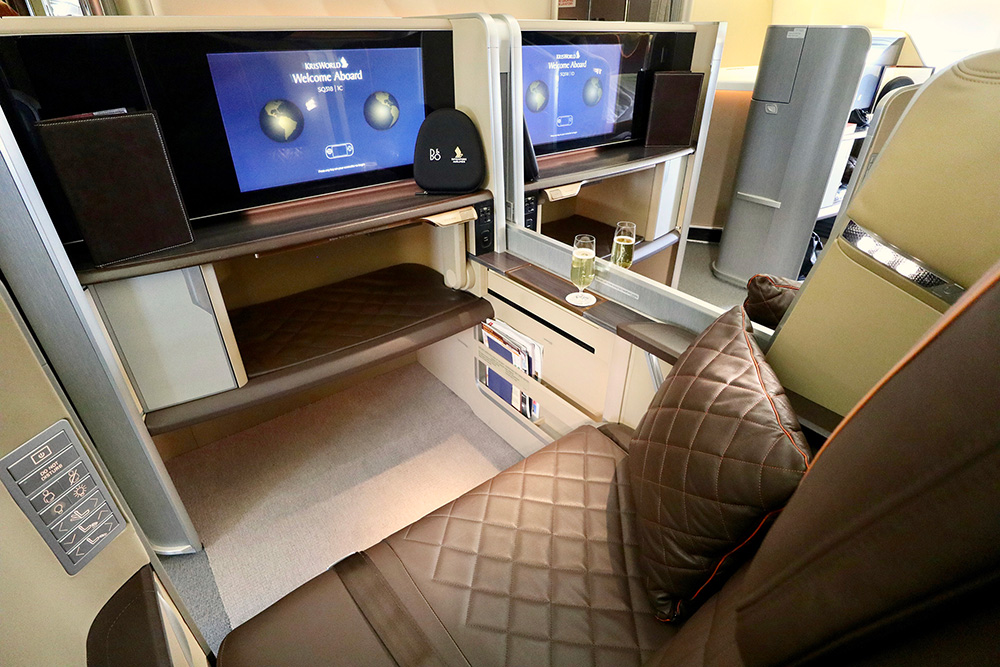Yesterday Singapore Airlines announced its worst ever full-year financial performance, in the wake of a torrid 12 months operating through the COVID-19 pandemic, recording a net loss of S$4.3 billion at group level in the 12 months to 31st March 2021 on the back of a near-total 98% reduction in passenger volumes.
While the a second half operating loss of S$650 million was a significant improvement on the S$1.9 billion recorded in the preceding six months, it still meant the SIA Group spent S$3.5 million per day more than it earned in revenue just to run its three airlines between October 2020 and March 2021.
That’s equivalent to losing S$150,000 per hour, or S$2,500 per minute, though it is a significant improvement on the first half of the financial year when operating losses were running at almost triple that rate.
Operating profits by division
| FY 19/20 (S$m) |
FY 20/21 (S$m) |
Change | |
| 294 | -1,701 | nm | |
| -112 | -220 | -96% | |
| -198 | -570 | -188% | |
| 68 | -19 | nm | |
| Other |
7 | -3 | nm |
| 59 | -2,513 | nm |
Group-wide revenues collapsed by 95%, while the average passenger load factor for the mainline carrier was just 13.4%. Decimated passenger traffic was “partially offset by higher cargo flown revenue, which rose by $758 million year-on-year to $2,709 million”.
SIA called it “the toughest year in its history“, a fact no one would likely dispute, but the result was not unexpected. The carrier had already clocked up a S$3.6 billion net loss in the first three quarters of FY20/21 alone, between 1st April 2020 and 31st December 2020.

Even though mass vaccination exercises are in progress in most of our major markets, the prognosis for the global airline industry remains uncertain.
While domestic markets have recovered in some countries, international air travel remains severely constrained and its recovery trajectory is still unclear.
The latest results also show a S$662 million net loss was attributed to the fourth quarter alone, a stark increase from the previous quarter’s S$142 million net loss.
In common with Q2’s confronting result, the primary reason for this was further write-downs of the aircraft fleet (representing an additional S$286 million charge), which means more early retirements for Singapore Airlines passenger aircraft no longer in the running for a return to service post-pandemic.
Boeing 777-300ERs are now being withdrawn
The Boeing 777-300ER fleet in Singapore Airlines has been the primary long-haul workhorse for some time, offering four-class service alongside the carrier’s flagship Airbus A380 fleet primarily on routes to Australia, New Zealand, Europe and the USA.
While the Airbus A380 is seeing its toes clipped, with a fleet reduction from 19 to 12 in the coming years, it’s been surprising to see the Boeing 777-300ER retain its significant proposed future fleet size, given the advent of newer and more efficient Airbus A350s and Boeing 787s joining the ranks.
That steadfast position has now shifted and this fleet too bears the brunt of the latest retirements, with confirmation that four Boeing 777-300ERs will be disposed of, leaving no chance of them returning to the operating fleet post-pandemic.

Singapore Airlines did not confirm which four of its 27-strong Boeing 777-300ER fleet would be facing the axe as a result of this decision. We have asked the airline for further details and will update this section accordingly with any response.
Update: SIA has confirmed to us that 9V-SWA, 9V-SWD, 9V-SWE and 9V-SWF are the affected aircraft.
The airline also holds three of its Boeing 777-300ERs on operating leases. These would not typically be affected by impairments since they are not the firm’s assets.
Depending on the expiry of the leases, these three aircraft could also be released from the fleet at the end of their tenure, potentially further reducing it to a total of 20 aircraft, assuming they do not form part of the four already written-down.
50% less First Class seats
Unfortunately this latest update spells bad news for SIA’s First Class product, with fewer seats available on the network in this cabin class post-COVID as a result of a smaller Boeing 777-300ER fleet.

Aside from Airbus A380s and Boeing 777-300ERs, First Class is no longer offered on any other Singapore Airlines aircraft type.
SIA has only recently started to offer First Class again on passenger flights after a one-year hiatus, with the cabin reintroduced on selected routes including London, Sydney, Jakarta and Los Angeles from June 2021.
This is also exacerbated by a previously announced reduction in the future Airbus A380 fleet from 19 to 12, with all of those aircraft set to feature the smaller 2017 Suites cabin totalling six seats instead of 12 once they return to service.
This will result in a total of just 164 seats in First Class and Suites cabins installed fleet-wide after COVID-19, compared to 334 in January 2020, a 50% reduction.
On the positive side, the first of 31 Boeing 777-9s arriving from around 2024 will have a brand new First Class / Suites concept installed, though these will progressively replace Airbus A380s and older Boeing 777-300ERs, potentially leading to only an approximate one-for-one replacement in First Class capacity.
This will inevitably make redeeming KrisFlyer miles for award seats in these sought-after cabins more challenging in the years ahead.
Boeing 737-800s
In the latest results announcement Singapore Airlines also confirmed a write-down on the book values of eight SilkAir Boeing 737-800 aircraft.

As we noted in recent fleet updates, the SIA Group has put seven of these eight ex-SilkAir Boeing 737-800 aircraft set for disposal on the market recently through UK-based agent Skytech-AIC.
These aircraft are not among the nine moving across to Singapore Airlines and will therefore be sold on the open market since they are surplus to the group’s fleet requirements as the SilkAir merger approaches completion.
Ultimately even the retained the Boeing 737-800s will be replaced in SIA by newer Boeing 737 MAX 8 aircraft, including flat-bed Business Class seats, seat-back entertainment systems and Wi-Fi connectivity, though the exact timeline for this transition is not yet confirmed.
Fleet retirements
Here’s a summary of the total 45 aircraft retirements by the group during the COVID-19 pandemic, by airline division.
SIA Group Aircraft Retirements
 |
||
| Aircraft Type | Total | Registrations |
| Airbus A380 | 7 | Not disclosed |
| Boeing 777-200 | 8 | 9V-SQJ 9V-SRF 9V-SRG 9V-SRH 9V-SRJ 9V-SRL 9V-SRP 9V-SRQ |
| Boeing 777-200ER | 3 | 9V-SVB 9V-SVC 9V-SVE |
| Boeing 777-300 | 4 | 9V-SYF 9V-SYH 9V-SYJ* 9V-SYL* |
| Boeing 777-300ER | 4 | 9V-SWA 9V-SWD 9V-SWE 9V-SWF |
* Already deregistered as of May 2021
 |
||
| Aircraft Type | Total | Registrations |
| Airbus A319 | 2 | 9V-SBG 9V-SBH |
| Airbus A320 | 5 | 9V-SLL 9V-SLM 9V-SLP 9V-SLR* 9V-SLS* |
| Boeing 737-800 | 8 | 9V-MGF 9V-MGG 9V-MGH 9V-MGI 9V-MGJ 9V-MGO 9V-MGP 9V-MGQ |
* Already deregistered as of May 2021
 |
||
| Aircraft Type | Total | Registrations |
| Airbus A320 | 4 | 9V-TAN 9V-TAQ 9V-TAU 9V-TAV |
 |
||
| Total Retirements | 45 aircraft | |
What about the A330s?
As most of our readers know, SIA’s Airbus A330s have also been removed from service since the start of the COVID-19 pandemic, with the final passenger flight using the type operating on 2nd April 2020.

The difference with this fleet is that it is entirely leased and was always due to be wound up as those leases expired, even before COVID-19. There are therefore no write-downs for the group to report here, with the final three aircraft to leave as scheduled when their leases expire later this year.
Fleet development plan
While 45 aircraft will not return to service with the group, new deliveries are set to continue. The mainline carrier will take 12 new aircraft during the 2021/22 financial year, as shown in the following table.
Operating Fleet
(Passenger aircraft)
| Aircraft Type | Fleet Totals | |||
| 31 Mar 2021 |
Leaving | Joining | 31 Mar 2022 |
|
| A330-300 | 3 | 3 | — | |
| A350-900 | 26 | 6* | 58 | |
| A350-900 Regional | 19 | |||
| A350-900 ULR | 7 | |||
| A380-800 | 12 | 12 | ||
| 737-800 | 8 | 1 | 9 | |
| 777-300ER | 23 | 23 | ||
| 787-10 | 15 | 5 | 20 | |
| All Types | 113 | 3 | 12 | 122 |
* Three of these aircraft have already been delivered, in early April 2021. SIA does not specify which A350 variants make up the future delivery schedule.
The table does not reflect introduction of Boeing 737 MAX 8 aircraft into the fleet, though this is expected in the coming months once approval for the aircraft to re-enter service is granted by the Civil Aviation Authority of Singapore.

14 Boeing 737 MAX 8 aircraft will be delivered to the airline during FY21/22, six from storage in Alice Springs (ex-SilkAir) plus eight directly from Boeing.
In addition, Scoot will take delivery of two Boeing 787-8s and 10 Airbus A321neos during the 2021/22 financial year.
Summary
Boeing 777-300ERs weren’t immune from SIA’s fleet rationalisation plans due to COVID-19, with four of these 27 aircraft no longer returning to the fleet.
That’s bad news for First Class and Suites capacity, which now suffers a 50% reduction even once all 23 Boeing 777-300ERs and 12 Airbus A380s return to service, compared to pre-COVID times. KrisFlyer redemption options in these cabins are sadly bound to suffer from this constraint.
Overall 45 group aircraft have now been written-down as a result of the pandemic, though the majority of these are accelerated retirements of older, less efficient jets.

Despite the challenges, Singapore Airlines continues to be upbeat about its ability to weather the storm, with hopes for travel recovery in the second half of 2021 still in sight.

Despite the resurgence of Covid-19 infections in many parts of the world, the growing pace of mass vaccination exercises in key markets provides hope for further recovery in international air travel demand in the second half of 2021.
Singapore Airlines strongly supports all efforts to further open borders in a safe and calibrated manner. The Group expects to continue with a measured expansion of the passenger network, and will remain nimble and flexible in adjusting capacity to meet the demand for air travel.
The group plans to offer 32% of its pre-COVID capacity by July 2021 and now serves around half it’s pre-COVID network of cities.
Yesterday the group also announced the issuance of a second tranche of Mandatory Convertible Bonds to raise an additional S$6.2 billion in funds to help see it through the crisis.
SIA has already raised S$15.4 billion in liquidity over the last year or so, through a variety of channels including from shareholders and via sale-and-leaseback deals on 11 of its wide-body aircraft.
(Cover Photo: Russell Lee)





Out of the four Boeing 777-300/ERs that are to leave the fleet post-COVID-19, 23 will remain in service. I think the ones that are to be retired will most likely be the leased ones first, which will most likely be returned to their lessors (three leased, one owned). That’s my take.